Vehicle Trajectory Reconstruction Model of Signalized Intersection in Connected Automated Environments
-
摘要:
车辆轨迹数据提供了大量的时空交通流信息,可用于各类交通研究. 传统车辆轨迹模型多以人工驾驶环境为研究对象,普遍未考虑由常规车(RV)、网联人工驾驶车(CV)以及智能网联车(CAV)组成的混合交通流的影响. 为解决该问题,构建智能网联环境下信号交叉口全样本车辆轨迹重构模型. 首先,介绍并分析智能网联环境下城市道路交叉口处车辆组成及排队通过情况;然后,构建城市道路混合交通流轨迹数量估计模型,并针对前后车的排队情况提出虚拟车的概念,用于估计不同车辆的交通状态;最后,设计数值仿真实验分析交通流密度和网联车渗透率对模型的影响,并基于NGSIM数据进行实例验证. 结果表明:轨迹重构模型的数量误差和位置误差均随着交通流密度和网联车渗透率的增大而减小,如交通流密度由20 veh/km增大至50 veh/km的过程中,模型数量误差和位置误差均呈现下降趋势,且最大误差分别不超过6.88%和8.02 m;与网联人工驾驶车渗透率相比,智能网联车的渗透率对模型结果影响更大.
Abstract:Vehicle trajectory data provides abundant spatial-temporal traffic flow information, which can be used for traffic research. Traditional vehicle trajectory models mostly focus on the artificial driving environment and fail to consider the impact of mixed traffic flows composed of regular vehicles (RVs), connected vehicles (CVs), and connected automated vehicles (CAVs). To solve this problem, a full sample vehicle trajectory reconstruction model of signalized intersections in connected automated environments was proposed. Firstly, the composition of vehicles at signalized intersections of urban roads and the passage of queues in connected automated environments were analyzed. Secondly, a model for estimating the number of trajectories of mixed traffic flows on urban roads was constructed, and the concept of virtual vehicles was further proposed to estimate the traffic status of different vehicles according to the queuing of front and rear vehicles. Finally, a numerical simulation test was designed to analyze the influence of traffic flow density and penetration rate of CAVs and CVs on the model, and the model was verified by NGSIM data. The results show that the error of the number and position of the model decreases with the increase in traffic flow density and the penetration rate of CAVs and CVs. For example, when the traffic flow density increases from 20 veh/km to 50 veh/km, both the error of the number and position of the model shows a decreasing trend, and the maximum error is no more than 6.88% and 8.02 m. Compared with that of CVs, the penetration rate of CAVs has a greater impact on the model results.
-
随着自动驾驶和无线通信技术的快速发展,智能网联车(CAV)应运而生. 然而,考虑到智能网联汽车和智慧交通基础设施的升级与换代是一个漫长的过程,因此,未来道路上,由常规车(RV)、网联人工驾驶车(CV)和智能网联车组成的混合交通流将长期存在[1]. 由于具备车-车、车-地通信条件,网联车(CV和CAV)可以提供自身轨迹数据或探测一定范围内的RV车辆,进而重构车辆的轨迹. 从数据中可以提取丰富的时空交通信息,用于交通状态估计[2–4]. 常规车由于缺失或未打开通信设备无法提供其自身的轨迹数据,故处于CAV探测范围之外的RV车辆轨迹数据仍无法获得. 因此,在智能网联环境下,想要获得全样本的车辆轨迹数据仍是一个难题. 此外,随着新技术的发展,车辆在交叉口的运行轨迹信息可用于计算交叉口延误、车辆排队长度等相关参数,从而优化信号配时[5]. 与普通路段研究不同,交叉口处存在车辆排队现象,时空上的截断使车辆的轨迹重构具有一定的挑战性. 综上可知,在城市道路信号交叉口处,利用网联车提供的轨迹数据来重构常规车的轨迹,为信号配时等研究提供数据支撑具有重要的研究意义[6].
许多学者对车辆的轨迹重构进行了研究,根据研究对象的不同,主要可分为传统道路下轨迹重构方法和智能网联环境下轨迹重构方法. 传统道路下重构车辆轨迹主要以交通波理论为基础,通过描述交通流在时空上的变化,重构全样本车辆轨迹. 如Coifman[7]基于双环检测器的数据,利用时空图方法计算路段行程时间从而重构车辆轨迹. 在此基础上,Mu等[8]提出一种基于无迹卡尔曼滤波(UKF)的方法,利用交叉口处浮动车数据重构车辆轨迹,并采用NGSIM (next generation simulation)数据验证模型有效性. 随着自动驾驶技术的发展,相关学者研究了智能网联环境下的车辆轨迹重构模型:Wang等[9]利用CAV检测范围内的轨迹数据估计道路交通密度,进一步基于元胞自动机模型重构了插入的RV轨迹. Han等[10]在给定信号配时信息的情况下,以降低油耗和排放为目标,提出了基于排队长度的信号交叉口自动车辆轨迹优化模型,有效缓解了交叉口处拥堵,同时使平均行程时间最小;蒋阳升等[11]基于智能驾驶员模型(IDM)跟驰特性构建了智能网联车混合交通流轨迹重构模型,通过对插入车辆轨迹的数量、位置和速度等参数进行估计,获得了全样本车辆轨迹数据.
由上述分析可知,现有大部分研究均能有效重构车辆轨迹,且随着自动驾驶技术的引入,车辆轨迹重构效果得到了一定程度的改善. 然而大多数研究主要适用于人工驾驶环境,虽部分研究涉及到智能网联环境,但在城市道路信号交叉口处,当存在车辆排队现象时,未考虑到常规车和智能网联车中间的网联人工驾驶车对轨迹重构模型的影响.
为解决该问题,本文考虑到智能网联车的普及程度,研究了包含CAV、CV 和RV 的混合交通流在城市道路交叉口处的全样本车辆轨迹重构方法. 考虑到智能网联环境下,仅 CAV 和 CV 可以提供车辆轨迹信息,故而提出基于跟驰特性、交通波理论的信号交叉口全样本车辆轨迹重构模型. 最后,通过数值仿真实验及真实路段数据验证模型的准确性,并分析了不同交通流密度和网联车渗透率对该模型的影响.
1. 方法概述
1.1 跟驰模型
跟驰模型是一种描述同一车道上车辆如何跟随前车运动的模型,因此,在已知部分轨迹的情况下,可以基于该模型求解其他车辆轨迹. 车辆之间典型的跟驰运动如图1所示. 图中:an−1、an(xn−1、xn)分别为跟驰运动中前车Vn−1、跟驰车Vn的加速度(位置).
跟驰模型认为车辆的加速度受自身速度、自身与前车速度差以及自身与前车间的距离等参数的影响. 当前车减速或制动时,跟驰车会作出相应的跟驰反应,从而保证车辆的安全性. 跟驰模型的通用描述公式为
an(t+τ)=f(vn(t),Δvn(t),sn(t)), (1) 式中:vn(t)为车辆Vn在时刻t的速度,Δvn(t)为前车与后车在时刻t的速度差,sn(t)为前车与后车在时刻t的位置差,τ为车辆的反应时间.
1.2 交通波理论
现有研究多利用交通波理论描述交叉口处车辆排队的形成与解散过程[12],如图2所示. 根据交通波理论,信号灯切换时会使路段上游行驶的车辆状态发生改变. 当红灯亮起时,车辆开始减速最终停在停车线前,形成首个停车点,从而产生停车波;当绿灯亮起时,车辆启动跟随前车驶离交叉口,在轨迹上产生首个启动点,从而形成启动波.
2. 数据环境分析
本文研究范围包括城市道路交叉口的上游至下游路段,且下游交叉口为信号管控交叉口,如图3所示,车流在交叉口附近存在明显的停车排队现象.
研究的城市道路混合交通流由3种类型的车辆组成,分别为CAV、CV和RV. 由于智能化程度较高,CAV能记录自身及周围一定范围内车辆的轨迹数据,CV只能记录自身的轨迹数据,RV无法提供轨迹数据. 在本文研究的环境中,信号相位为已知条件.
根据以上分析可知,在城市道路混合交通流中,主要是重构CAV探测区间以外的RV轨迹. 城市道路混合交通流提供的精确轨迹如图4所示,图中,CAV和CV的下标数字用以区分同一场景中出现的相同类型车辆. 该图正上方的颜色柱表示信号相位情况. 由已知轨迹可知,部分车辆需要排队等待,而另外一部分车辆直接通过了交叉口. 因此,根据城市道路交叉口排队情况本文需要重构的轨迹可以分为3类,即阴影区域A、 B和C分别涉及到的未知RV轨迹:阴影区域A中的轨迹前后车均未排队;阴影区域B中的轨迹前车不需要排队,后车需要进行排队;阴影区域C中的轨迹前车后车均需要排队,不同场景下的轨迹需分别重构.
3. 车辆轨迹数量估计模型
车辆在信号控制路口行驶时,可分为经排队到达车和未经排队到达车. 对于未经排队到达车,车辆的视野范围内信号灯一直为绿灯,车辆不必减速,跟随前车正常驶离交叉口即可,此时,车辆状态完全遵循跟驰模型. 对于经排队到达车,前期车辆的视野范围内信号灯显示绿灯,车辆跟随前车做跟驰运动. 红灯启亮后,车辆既需要跟随前车做跟驰运动,与前车保持一定安全距离,也会受到信号灯的外力干扰,主动减速直至在停车线前安全停下. 此时,车辆不完全做跟驰运动. 绿灯启亮后,对于排在停车线前的第一辆车,车辆主动加速起步,后面的车辆跟随前车起步. 在此过程中,车辆与第一阶段一样,跟随前车做跟驰运动.
由分析可知,经排队到达车的行驶过程包含跟驰前车、减速停车、排队等待、跟驰前车启动4个阶段. 故经排队到达车的轨迹存在3个关键点,即减速点Sde,停车点Sp和启动点Ss,如图5所示. 图中:xn,p为Vn的停车点位置,xn−1,p为Vn−1的停车点位置. 将已知轨迹中第一辆停车排队的车辆记为Vj,则Vj到达减速点时间为tj,de.
综合上述分析可知,在时刻tj,de以前,所有车辆仍符合传统跟驰模型规律,则t∈[0,tj,de]阶段内轨迹数量估计方法如下.
1) 计算
设每个重构区域前车为Vj−1,后车为Vj. 插入车辆数最大为N,如式(2)[11].
N=⌊min (2) 式中:\left\lfloor {\text{•}} \right\rfloor 表示计算结果向下取整, {x_{j - 1}}\left( 0 \right) 为时刻 t = 0 时车辆{{\text{V}}_{j - 1}}的位置, l 为车身长度, {s_0} 为最小停车间距, k 为时间间隔序号,{\Delta t}为时间间隔长度.
将车辆{{\text{V}}_j}和车辆{{\text{V}}_{j - 1}}之间插入的车辆分别记为{{\text{V}}_{j,1}},{{\text{V}}_{j,2}},{{\text{V}}_{j,3}},{{\text{V}}_{j,4}},\cdots,{{\text{V}}_{j,m}}. 其中{{\text{V}}_{j,m}}是{{\text{V}}_j}的前导车,两者构成跟驰行为. 插入m辆车后,{{\text{V}}_{j,m}}速度和位置的估计公式为
{v_{j,m}}\left( t \right) = {v_j}\left( t \right) - \frac{{\left( {{v_j}\left( t \right) - {v_{j - 1}}\left( t \right)} \right)}}{{\left( {m + 1} \right)}}, (3) {x_{j,m}}\left( t \right) = {x_j}\left( t \right) - \frac{{\left( {{x_j}\left( t \right) - {x_{j - 1}}\left( t \right)} \right)}}{{\left( {m + 1} \right)}}. (4) 同理,根据跟驰模型由{{\text{V}}_{j,m}}的轨迹数据可求出{{\text{V}}_j}的理论加速度,如(5)所示.
\begin{split} & {\hat a_j}\left( t \right) ={f_j}\left( {{v_j}\left( {t - \tau } \right),{v_{j - 1}}\left( {t - \tau } \right) - {v_j}\left( {t - \tau } \right),}\right.\\ &\quad\left.{{x_{j - 1}}\left( {t - \tau } \right) - {x_j}\left( {t - \tau } \right)} \right). \end{split} (5) 另外,选用{{\text{V}}_j}理论与实际加速度的均方根误差作为判断标准,则时刻 t 误差最小时对应的m为
m = \mathop {{\rm{arg}}}\limits_m \;{\text{min}}\sqrt {{{\left( {{{\hat a}_j}\left( t \right) - {a_j}\left( t \right)} \right)}^2}}. (6) 统计每一秒求出的最佳车辆数,其中出现次数最多的最佳车辆数即为本模型的解,如式(7).
{m_{^{{\text{initial}}}}} = {{\rm{MODE}}} (m({t_1}),m({t_2}), \cdots ,m({t_i})). (7) 2) 修正
在已知轨迹信息中,与高速公路交通流不同的是城市道路交通流存在停车排队的阶段. 在这个阶段中,车辆停车点的位置可用于修正前后车均为停车到达车时需要插入的车辆数,则{{\text{V}}_n}和{{\text{V}}_{n - 1}}之间需要插入的RV数量为
{m_*} = \frac{{{x_{n - 1,{\text{p}}}} - {x_{n,{\text{p}}}}}}{{{s_0} + l}}. (8) 通过式(7)修正 {m_{^{{\text{initial}}}}} ,二者取较小者为最终需要插入的车辆数m,即
m=\mathrm{min}\left\{{m}_{{}^{\text{initial}}}\text{,}{m}_{*}\right\}. (9) 4. 车辆轨迹状态估计模型
根据城市道路交叉口排队情况,需要重构的轨迹可分为:前后车均为未经排队到达车;前后车均为经排队到达车;前车为未经排队到达车,后车为经排队到达车.
4.1 前后车均为未经排队到达车
当前后车{{\text{V}}_{j - 1}}、{{\text{V}}_j}均为未经排队到达车时,需重构轨迹车辆完全遵循跟驰模型,在求得插入轨迹数量m后,可利用式(3)估计插入车辆的速度. 而为满足安全约束,插入车辆的位置只能限制在一定范围内,如式(10)所示[11].
{x_j}\left( t \right) + {s_0} + l \leqslant {x_{j,m}}\left( t \right) \leqslant {x_{j - 1}}\left( t \right) - {s_0} - l. (10) 求得插入车辆的速度和位置区间后,将{{\text{V}}_{j,m}}和{{\text{V}}_j}分别作为前、后车. {{\text{V}}_{j,m}}插入位置{x_{j,m}}\left( t \right)会对后车{{\text{V}}_j}产生一定影响,具体体现在后车的加速度上. 因此,可由式(5)计算{{\text{V}}_j}的理论加速度. 当{{\text{V}}_{j,m}} 的估计加速度{\hat a_{j,m}}\left( t \right)与实际加速度{a_{j,m}}\left( t \right)误差最小时,即可得到插入车辆{{\text{V}}_j}的位置. 以{{\text{V}}_j}的理论与实际加速度的均方根误差作为判断标准,则误差最小时对应的车辆插入位置为
\min f\left( {{x_{j,m}}\left( t \right)} \right) = \sqrt {\frac{1}{k}{{\sum\limits_{t = \Delta t}^{k\Delta t} {\left( {{{\hat a}_j}\left( t \right) - {a_j}\left( t \right)} \right)^2} }}}, (11) 由此,可求得插入车辆的轨迹.
4.2 前后车均为经排队到达车
当前后车均为经排队到达车时,需重构轨迹的车辆在行驶过程中会经历跟驰前车、减速停车、排队等待、跟随前车启动4个阶段. 在这4个阶段中,第一阶段跟驰前车时交通流的状态与未经排队到达车类似,同样可用4.1节中方法进行重构,其他阶段的轨迹则需寻找新的方法进行求解.
4.2.1 重构排队等待阶段轨迹
根据交通波理论,当车辆在交叉口停车排队时,假设车辆均匀到达,轨迹中所有停车点可构成停车波线,启动点形成启动波线,如图2所示.
基于最小二乘法拟合停车波线和启动波线,如式(12).
\left\{ \begin{gathered} {x_{\text{p}}} = {k_1}{t_{\text{p}}} + {b_1}, \\ {x_{\text{s}}} = {k_2}{t_{\text{s}}} + {b_2}, \\ \end{gathered} \right. (12) 式中:{k_1}、{k_2}、{b_1}、{b_2}均为系数,{t_{\text{p}}}、{t_{\text{s}}}分别为停车点和启动点时间,{x_{\text{p}}}、{x_{\text{s}}}分别为停车点和启动点位置.
当车辆停车排队时,车头间距可认为是最小停车安全间距{s_0} + l. 设插入车辆的数量为m,在车辆{{\text{V}}_n}和车辆{{\text{V}}_{n - 1}}之间依次插入的车辆记为{{\text{V}}_{n,1}},{{\text{V}}_{n,2}}, {{\text{V}}_{n,3}},{{\text{V}}_{n,4}},\cdots,{{\text{V}}_n}_{,m},则插入车辆的停车点位置为
{x_{n,i,{\text{p}}}} = {x_{n,i,{\text{s}}}} = {x_{n,{\text{p}}}} - i\left( {{s_0} + l} \right), (13) 式中:{x_{n,i,{\rm{p}}}}、{x_{n,i,{\text{s}}}}分别为插入车辆的停车和启动位置,i为车辆序号.
对于同一辆车,停车点位置与启动点位置相同,停车点和启动点的时间可由式(12)推导得出.
\left\{ \begin{gathered} {t_{n,i,{\text{p}}}} = \frac{{{x_{n,{\text{p}}}} - i \left( {{s_0} + l} \right) - {b_1}}}{{{k_1}}}, \\ {t_{n,i,{\text{s}}}} = \frac{{{x_{n,{\text{p}}}} - i \left( {{s_0} + l} \right) - {b_2}}}{{{k_2}}}, \\ \end{gathered} \right. (14) 式中:{t_{n,i,{\rm{p}}}}、{t_{n,i,{\text{s}}}}分别为插入车辆的停车和启动时间.
此时,第三阶段停车排队时的轨迹重构完成.
4.2.2 重构减速停车轨迹
车辆行驶的第一阶段跟驰前车和第二阶段减速停车之间通过减速点{S_{{\text{de}}}}进行区分. 因此,寻找车辆的减速点为本步骤的前提.
驾驶员视野中出现红灯时,车辆开始减速,轨迹中出现减速点. 驾驶员的视野与车速密切相关,表1为车辆速度与视野和注视距离间的关系[13].
表 1 车辆速度与视野和注视距离关系Table 1. Relationship among vehicle speed, horizon, and gaze distance车辆速度/(km·h−1) 视野/(°) 注视距离/m 0 170 80 40 100 180 60 86 355 80 60 377 100 40 564 120 22 710 经回归分析,注视距离Df与车辆速度v呈线性关系[14],如式(15).
{D_{\text{f}}} = 6.45v - 82. (15) 首先,利用4.1节中方法重构车辆到达减速点前的初始轨迹;然后,根据式(15)计算初始轨迹中车辆的注视距离. 当车辆注视距离中出现红灯,该车开始做减速运动,在轨迹中该点为减速点;若出现绿灯,车辆依旧跟驰前车,直到信号灯启红,车辆开始减速. 因此,插入车辆{{\text{V}}_n}_{,i}的减速点时刻为
{t_{n,i,{\text{de}}}} = \min \left\{ {g\left( t \right),{t_{{\text{b,red}}}}} \right\}, (16) 式中:{t_{{\text{b,red}}}}为信号变红的时刻,g(t)为车辆注视距离中出现信号灯的时刻.
车辆注视距离中出现信号灯的时刻g(t)为
g\left( t \right) = t,\quad {x_{n,i}}(t) + 6.45 {v_{n,i}}(t) - 82 \geqslant {x_{\rm{b}}}, (17) 式中:{x_{\text{b}}}为信号灯的位置,{x_{n,i}}(t)和{v_{n,i}}(t)分别为时刻 t 插入车辆的位置和速度.
到达减速点后,车辆既需要跟随前车减速,与前车保持一定安全距离,又需主动减速,直至在停车线前安全停下. 在这个阶段中,假设停车线前存在一辆静止的虚拟车,如图6所示. 该过程可以抽象成在交叉口受红灯影响的车辆均跟虚拟车构成跟驰关系,跟随虚拟车前进. 由于车辆还需跟随前车减速,以保持安全距离. 因此,认为车辆与前车和虚拟车均保持跟驰关系,其加速度取二者较小值. 虚拟跟驰关系的跟驰模型参数由停车线前第一辆排队车标定.
此时,车辆轨迹可直接由跟驰模型求得,以{{\text{V}}_{n,1}}为例,轨迹计算公式为
\begin{gathered} {a_{n,1}}\left( t \right) = \min \left\{ {{a_{n,1,n - 1}}\left( t \right),{a_{n,1,{\text{assume}}}}\left( t \right)} \right\}, \\ \end{gathered} (18) \left\{ \begin{aligned} & {a_{n,1,n - 1}}\left( t \right) = f\left( {{v_{n,1}}\left( {t - \tau } \right),{v_{n,1}}\left( {t - \tau } \right) - }\right.\\ &\quad\left.{ {v_{n - 1}}\left( {t - \tau } \right), {x_{n - 1}}\left( {t - \tau } \right) - {x_{n,1}}\left( {t - \tau } \right)} \right) ,\\ & {a_{n,1,{\text{assume}}}} \left( t \right) = f\left( {{v_{n,1}}\left( {t - \tau } \right),{v_{n,1}}\left( {t - \tau } \right) - }\right.\\ &\quad\left.{ {v_{{\text{assume}}}}\left( {t - \tau } \right), {x_{{\text{assume}}}}\left( {t - \tau } \right) - {x_{n,1}}\left( {t - \tau } \right)} \right) , \\ \end{aligned} \right. (19) {v_{n,1}}\left( t \right) = {v_{n,1}}\left( {t - \tau } \right) + {a_{n,1}}\left( t \right), (20) {x_{n,1}}\left( t \right) = {x_{n,1}}\left( {t - \Delta t - \tau } \right) + {v_{n,1}}\left( {t - \Delta t - \tau } \right) \Delta t, (21) 式中:{a_{n,1,{\text{assume}}}}(t)为利用虚拟跟驰模型得到的{{\text{V}}_{n,1}}加速度,{a_{n,1,n - 1}}(t)为跟随前车{{\text{V}}_{n - 1}}求得的{{\text{V}}_{n,1}}加速度,{v_{{\rm{assume}}}}(·)和{x_{{\text{assume}}}}(·)分别为虚拟车的速度和位置.
据式(18)~(21)可得其余插入车辆的轨迹.
4.2.3 重构启动点以后轨迹
当绿灯启亮后,车辆跟随前车起步驶离交叉口,轨迹可由跟驰模型直接求解得到,以{{\text{V}}_{n,1}}为例,如式(20)~(22)所示.
\begin{split} &{a_{n,1}}\left( t \right) = f\left( {{v_{n,1}}\left( {t - \tau } \right),{v_{n,1}}\left( {t - \tau } \right) - {v_{n - 1}}\left( {t - \tau } \right),}\right.\\ &\quad\left.{{x_{n - 1}}\left( {t - \tau } \right) - {x_{n,1}}\left( {t - \tau } \right)} \right). \end{split} (22) 4.3 前车为未经排队到达车,后车为经排队到达车
当前车为未经排队到达车,后车为经排队到达车时,需重构轨迹的车辆也分为是否需要经历停车排队过程2种. 根据后车停车点的位置可计算前面排队车辆的数量,通过第3节方法可求得需插入的车辆总数. 需插入的轨迹中经过排队过程的车辆数{m_{\rm{s}}}和未经过排队过程的车辆数{m_{{\rm{no}}}}分别为
\left\{ \begin{gathered} {m_{\text{s}}} = \frac{{{x_{{\text{stopsign}}}} - {x_{n,{\text{p}}}}}}{{{s_0} + l}}, \\ {m_{{\text{no}}}} = {m_*} - {m_{\text{s}}}, \\ \end{gathered} \right. (23) 式中: {x_{{\text{stopsign}}}} 为交叉口停车线的位置.
对于未经过排队过程的车辆轨迹,依旧可用4.1节方法进行重构. 对于经过排队过程的车辆轨迹,仍可假设停车线前存在一辆静止的虚拟车,需排队的车辆受该虚拟车的影响开始减速. 而这些车中存在特殊一类,即停车线前第一辆车,该车的前车已通过交叉口,自身未通过交叉口. 对于这一类车辆,车辆主要受虚拟车影响. 因为当前车通过交叉口后,虚拟车相比前车距离更近,且车速为0,由虚拟跟驰模型求得的加速度必然小于跟驰前车求出的加速度,因此同样可用4.1节中的方法求解轨迹位置.
5. 微观仿真验证
5.1 仿真参数设置
为验证模型准确性,本文基于SUMO仿真软件模拟城市道路交通流的运行规律. 仿真路段为交叉口上游至下游的单车道路段. 随机抽取一定比例的仿真车辆作为CAV和CV,模拟真实环境下CAV和CV的通信功能,将部分车辆轨迹作为已知条件,重构未知RV轨迹. 仿真路段中信号灯设置在
6000 m处,仿真步长为1 s,整个仿真过程中采用同一固定信号相位方案,在第100 s时信号灯由绿变黄.按照不同的建模原理,跟驰模型主要有安全距离模型、刺激-反应模型、社会力模型等. 相比之下,社会力模型中,IDM模型利用较少的参数便能很好地描述交通流状态及驾驶员的驾驶习惯,应用范围更广. 因此,本文采用 IDM模型表述车辆间的跟驰特性,其模型表达式如式(24),相关参数由遗传算法标定得到.
\left\{ \begin{gathered} {a_n}\left( t \right) = {A_n}\left[ {1 - {{\left( {\frac{{{v_n}\left( t \right)}}{{{v_{\rm{f}}}}}} \right)}^\delta } - {{\left( {\frac{{{s_{n,*}}\left( t \right)}}{{{s_n}\left( t \right)}}} \right)}^2}} \right], \\ {s_{n,*}}\left( t \right) = {s_0} + {T_n}{v_n}\left( t \right) + \frac{{{v_n}\left( t \right)\left( {{v_n}\left( t \right) - {v_{n - 1}}\left( t \right)} \right)}}{{2\sqrt {{A_n}{b_n}} }}, \\ \end{gathered} \right. (24) 式中:{A_n}为车辆{{\text{V}}_n}的最大加速度,{v_{\rm{f}}}为期望速度,s_{n *} \left( t \right)为最小安全跟驰间距,{T_n}为安全车头时距,{b_n}为舒适减速度的绝对值. 各参数取值如表2所示.
表 2 IDM跟驰模型参数Table 2. Parameters of IDM car-following model模型 An/ (m·s−2) bn/ (m·s−2) vf/ (m·s−1) Tn/s s0/m IDM 1.00 2.00 33.30 1.50 2.00 虚拟 IDM 2.00 1.68 28.92 1.45 2.00 为研究交通流密度和网联车渗透率对本文轨迹重构模型的影响,分别设计2种仿真实验方案:在实验方案一中,固定网联车(CAV、CV)的渗透率,分别讨论不同交通流密度对模型准确性的影响;在实验方案二中,固定交通流密度,改变网联车渗透率,讨论不同渗透率下模型准确性的变化.
5.2 交通流密度影响
由于交通流中密度超过50 veh/km时交叉口为过饱和状态. 因此,本文详细研究交通流密度为20、30、40、50 veh/km时对模型结果的影响,将网联车CAV、CV的渗透率固定为8%、20%,其轨迹重构图像如图7所示. 模型误差如表3所示,表中:MAEm (MAEx)为插入车辆轨迹的数量(位置)与实际轨迹的数量(位置)之间的平均绝对误差,MAPEm为插入车辆轨迹的数量与实际轨迹数量之间的平均百分比误差,RMSEx为插入车辆轨迹的位置与实际轨迹位置之间的均方根误差.
由表3可知,轨迹重构的数量误差和位置误差均随着交通流密度的增大而减小,说明交通流密度越大,轨迹重构的效果越好. 分析可知:当交通流密度较小时,车辆之间间距较大,插入轨迹的区间较长,因而轨迹重构的位置误差较大;随着交通流密度的增加,车辆之间的间距减小,轨迹重构的难度减小,所以误差也随之减小.
表 3 不同交通流密度条件下轨迹重构结果Table 3. Trajectory reconstruction results under different traffic density conditions交通流
密度/
(veh·km−1)插入 RV 的数量 插入 RV 的位置 实际车
辆/vehMAEm/
vehMAPEm/
%MAEx/
mRMSEx/
m20 29.05 2.00 6.88 4.15 8.02 30 29.09 1.85 6.36 3.18 7.45 40 29.00 1.82 6.27 2.93 7.06 50 23.50 1.33 5.67 2.88 6.61 5.3 网联车渗透率影响
5.3.1 CAV渗透率的影响
设交通流密度、CV渗透率分别为50 veh/km、20%,分别讨论CAV渗透率为2%、4%、6%、8%、10%、12%和14%情况下,车辆轨迹重构效果. 其中,重构轨迹如图8所示,模型误差如表4所示.
表 4 不同CAV渗透率条件下轨迹重构结果Table 4. Trajectory reconstruction results under different CAV penetration ratesCAV 渗透率/
%CAV 数量/
veh插入 RV 的数量 插入 RV 的位置 实际车辆/veh MAEm/
vehMAPEm/
%MAEx/
mRMSEx/
m2 1 34.04 2.41 7.07 3.46 8.37 4 2 29.85 2.04 6.83 3.01 7.63 6 3 28.03 2.00 7.14 3.31 8.01 8 4 23.50 1.33 5.67 2.88 6.61 10 5 22.05 1.18 5.37 2.80 6.51 12 6 18.93 0.67 3.54 2.21 5.04 14 7 16.48 0.58 3.52 2.19 4.85 由表4可知,信号交叉口车辆轨迹重构模型的插入数量误差和位置误差均随着CAV渗透率的增大而减小. 针对轨迹重构的位置误差分析,由于轨迹是分段进行重构的,所以误差需要分段分析. 首先,第一阶段中跟驰前车轨迹重构的位置误差随着CAV渗透率的增大而减小,与现有研究得出结论一致[11]. 在后面阶段中,都是基于跟驰模型计算当前车辆轨迹,再基于这条轨迹计算后面车辆的轨迹. 由于计算当前车辆轨迹时存在误差,在计算后面车辆轨迹时,误差会进行累计,所以一个区间内需要插入的轨迹越多,误差越大. 当CAV渗透率增大时,一个区间内需要重构的轨迹数减小,所以位置误差也减小. 综上,轨迹重构的位置误差会随着CAV渗透率的增大而减小;当CAV渗透率仅有2%的情况下,凭借CV轨迹的辅助,本文模型也能够较好地重构RV的轨迹.
5.3.2 CV渗透率的影响
设交通流密度、CAV渗透率分别为50 veh/km、8%,讨论CV渗透率为8%、12%、16%、20%、24%、28%时轨迹重构结果,如表5所示.
表 5 不同CV渗透率条件下轨迹重构结果Table 5. Trajectory reconstruction results under different CV penetration ratesCV 渗透率/% CV 辆数/veh 插入 RV 的数量 插入 RV 的位置 实际车辆/veh MAEm/
vehMAPEm/
%MAEx/
mRMSEx/
m8 4 27.33 2.25 8.23 3.74 8.72 12 6 26.61 1.74 6.54 3.55 8.23 16 8 24.86 1.57 6.32 3.07 6.96 20 10 23.50 1.33 5.67 2.88 6.61 24 12 23.30 1.23 5.26 2.71 6.43 28 14 21.41 0.91 4.26 2.49 6.06 由表5可知:随着CV渗透率的提高,城市道路混合交通流轨迹重构模型的插入数量误差和位置误差均减小,模型准确性提高;CV的渗透率越高,已知轨迹越多,需要重构的车辆数减少,轨迹重构的难度减小,模型误差也逐渐减小.
此外,本文还比较分析了CAV和CV渗透率对试验结果的影响程度,均方根误差热力图如图9. 其中,X轴表示CAV渗透率对模型准确性的影响,Y轴表示CV渗透率对模型准确性的影响.
由图9可知:随着CAV或CV渗透率的增加,模型的均方根误差逐渐减小,轨迹重构效果逐渐改善;CAV渗透率对模型准确性的影响更大. 分析可知,由于智能化程度的不同,增加一辆CAV能够获得除车辆自身以外道路上多辆车的轨迹数据,但增加一辆CV时,只能得到该车的轨迹数据. 因此,当分别增加相同数量的CAV和CV时,增加CAV的模型误差更小.
从上述2个仿真实验的结果中可以观察到,随着轨迹数量估计误差的减小,轨迹位置误差也呈现出下降趋势. 分析可知,本文是在轨迹数量估计的基础上进一步估计轨迹的位置,当数量误差较大时,轨迹位置就会出现明显偏移. 如2辆CAV之间存在一辆RV或两辆RV时,求得的RV轨迹明显是不同的. 因此,轨迹的位置误差会随着数量误差的减小而减小.
6. 实测数据验证
6.1 数据选择
为了更好地将模型应用到实际路段,本节将通过NGSIM数据对第3节和第4节提出的轨迹重构模型进行验证,并将本文模型重构效果与已有方法进行对比[12]. 为了模拟混合交通流的驾驶环境,抽取8%和20%的车辆分别作为智能网联车和网联人工驾驶车辆,然后通过本文提出的模型进行轨迹重构.
6.2 轨迹重构效果分析
同样选用IDM跟驰模型检验模型的准确性,通过遗传算法标定模型参数,其取值为{A_n} = 3.51\;{\rm{m}}/{{\rm{s}}^2},{b_n} = 3.55\;{\rm{m/}}{{\rm{s}}^2}, {v_{\rm{f}}} = 24.88\;{\rm{m/s}} ,{T_n} = 1\;{\rm{s}}, {s_0} = 2.00 \;{\rm{m}} . 轨迹重构的误差如表6所示,重构轨迹如图10所示.
表 6 Lankershim Boulevard街道轨迹重构误差Table 6. Trajectory reconstruction errors of Lankershim Boulevard Street插入 RV 的数量 插入 RV 的位置 本文方法 已有方法 实际车
辆/vehMAEm/
vehMAPEm/
%MAEx/
mRMSEx/
mMAEx/
mRMSEx/
m5.63 0.38 6.75 4.35 5.94 6.53 7.60 由表6可知,轨迹插入数量的平均绝对误差为0.38辆,平均绝对百分比误差为6.75%. 虽然实验数据有限,但需要插入RV的数量误差较小. 插入位置的平均绝对误差为4.35 m,均方根误差为5.94 m,处于可接受范围. 由图10可知,重构轨迹与真实轨迹走势相同,重构效果较好.
与已有的轨迹重构方法相比,本文提出的模型重构效果更佳,重构轨迹与真实轨迹走势更加相近. 这是因为已有方法是通过曲线拟合重构车辆减速阶段的轨迹,而车辆在交叉口减速过程中走走停停,曲线拟合效果欠佳.
综上所述,本文提出的城市道路轨迹重构方法在实际路段上也有较好的效果.
7. 结 论
1) 轨迹重构的数量误差和位置误差均随着交通流密度的增大而减小.
2) 网联车渗透率不同时,轨迹重构的数量误差和位置误差均在可接受范围内. 随着CAV和CV渗透率的提高,本文提出的轨迹重构模型插入车辆的数量误差和位置误差均减小. 与CV渗透率相比,CAV渗透率对结果的影响更大.
3) 城市道路混合交通流车辆轨迹重构模型在实际路段上也能较好地估算轨迹数量和轨迹位置.
本文提出了基于跟驰模型和交通波理论的智能网联环境下信号交叉口全样本车辆轨迹重构模型,并采用实例数据验证了模型的有效性. 但模型基于单车道纵向考虑CAV的检测范围,未考虑多车道横向车辆的影响,未来将结合协同换道模型,构建智能网联环境下多车道轨迹重构模型.
致谢:中央高校基本科研业务费专项资金资助项目(2682021CX058)和中铁第一勘察设计院集团有限公司科研项目(院科17-48).
-
表 1 车辆速度与视野和注视距离关系
Table 1. Relationship among vehicle speed, horizon, and gaze distance
车辆速度/(km·h−1) 视野/(°) 注视距离/m 0 170 80 40 100 180 60 86 355 80 60 377 100 40 564 120 22 710 表 2 IDM跟驰模型参数
Table 2. Parameters of IDM car-following model
模型 An/ (m·s−2) bn/ (m·s−2) vf/ (m·s−1) Tn/s s0/m IDM 1.00 2.00 33.30 1.50 2.00 虚拟 IDM 2.00 1.68 28.92 1.45 2.00 表 3 不同交通流密度条件下轨迹重构结果
Table 3. Trajectory reconstruction results under different traffic density conditions
交通流
密度/
(veh·km−1)插入 RV 的数量 插入 RV 的位置 实际车
辆/vehMAEm/
vehMAPEm/
%MAEx/
mRMSEx/
m20 29.05 2.00 6.88 4.15 8.02 30 29.09 1.85 6.36 3.18 7.45 40 29.00 1.82 6.27 2.93 7.06 50 23.50 1.33 5.67 2.88 6.61 表 4 不同CAV渗透率条件下轨迹重构结果
Table 4. Trajectory reconstruction results under different CAV penetration rates
CAV 渗透率/
%CAV 数量/
veh插入 RV 的数量 插入 RV 的位置 实际车辆/veh MAEm/
vehMAPEm/
%MAEx/
mRMSEx/
m2 1 34.04 2.41 7.07 3.46 8.37 4 2 29.85 2.04 6.83 3.01 7.63 6 3 28.03 2.00 7.14 3.31 8.01 8 4 23.50 1.33 5.67 2.88 6.61 10 5 22.05 1.18 5.37 2.80 6.51 12 6 18.93 0.67 3.54 2.21 5.04 14 7 16.48 0.58 3.52 2.19 4.85 表 5 不同CV渗透率条件下轨迹重构结果
Table 5. Trajectory reconstruction results under different CV penetration rates
CV 渗透率/% CV 辆数/veh 插入 RV 的数量 插入 RV 的位置 实际车辆/veh MAEm/
vehMAPEm/
%MAEx/
mRMSEx/
m8 4 27.33 2.25 8.23 3.74 8.72 12 6 26.61 1.74 6.54 3.55 8.23 16 8 24.86 1.57 6.32 3.07 6.96 20 10 23.50 1.33 5.67 2.88 6.61 24 12 23.30 1.23 5.26 2.71 6.43 28 14 21.41 0.91 4.26 2.49 6.06 表 6 Lankershim Boulevard街道轨迹重构误差
Table 6. Trajectory reconstruction errors of Lankershim Boulevard Street
插入 RV 的数量 插入 RV 的位置 本文方法 已有方法 实际车
辆/vehMAEm/
vehMAPEm/
%MAEx/
mRMSEx/
mMAEx/
mRMSEx/
m5.63 0.38 6.75 4.35 5.94 6.53 7.60 -
[1] SHI X W, LI X P. Constructing a fundamental diagram for traffic flow with automated vehicles: methodology and demonstration[J]. Transportation Research Part B: Methodological, 2021, 150: 279-292. doi: 10.1016/j.trb.2021.06.011 [2] 冉斌,谭华春,张健,等. 智能网联交通技术发展现状及趋势[J]. 汽车安全与节能学报,2018,9(2): 119-130. doi: 10.3969/j.issn.1674-8484.2018.02.001RAN Bin, TAN Huachun, ZHANG Jian, et al. Development status and trend of connected automated vehicle highway system[J]. Journal of Automotive Safety and Energy, 2018, 9(2): 119-130. doi: 10.3969/j.issn.1674-8484.2018.02.001 [3] HU X W, SUN J. Trajectory optimization of connected and autonomous vehicles at a multilane freeway merging area[J]. Transportation Research Part C: Emerging Technologies, 2019, 101: 111-125. doi: 10.1016/j.trc.2019.02.016 [4] LU G Y, NIE Y, LIU X B, et al. Trajectory-based traffic management inside an autonomous vehicle zone[J]. Transportation Research Part B: Methodological, 2019, 120: 76-98. doi: 10.1016/j.trb.2018.12.012 [5] 张惠玲,刘晓晓,许裕东. 基于车辆轨迹重构的信号交叉口延误提取研究[J]. 交通运输系统工程与信息,2020,20(2): 237-243. doi: 10.16097/j.cnki.1009-6744.2020.02.035ZHANG Huiling, LIU Xiaoxiao, XU Yudong. Delay extraction based on vehicle’s trajectory reconstruction at signalized intersection[J]. Journal of Transportation Systems Engineering and Information Technology, 2020, 20(2): 237-243. doi: 10.16097/j.cnki.1009-6744.2020.02.035 [6] PUNZO V, BORZACCHIELLO M T, CIUFFO B. On the assessment of vehicle trajectory data accuracy and application to the next generation simulation (NGSIM) program data[J]. Transportation Research Part C: Emerging Technologies, 2011, 19(6): 1243-1262. doi: 10.1016/j.trc.2010.12.007 [7] COIFMAN B. Estimating travel times and vehicle trajectories on freeways using dual loop detectors[J]. Transportation Research Part A: Policy and Practice, 2002, 36(4): 351-364. doi: 10.1016/S0965-8564(01)00007-6 [8] MU J T, HAN Y, ZHANG C, et al. An unscented Kalman filter-based method for reconstructing vehicle trajectories at signalized intersections[J]. Journal of Advanced Transportation, 2021, 2021: 1-12. [9] WANG Y P, WEI L, CHEN P. Trajectory reconstruction for freeway traffic mixed with human-driven vehicles and connected and automated vehicles[J]. Transportation Research Part C: Emerging Technologies, 2020, 111: 135-155. doi: 10.1016/j.trc.2019.12.002 [10] HAN X, MA R, ZHANG H M. Energy-aware trajectory optimization of CAV platoons through a signalized intersection[J/OL]. Transportation Research Part C: Emerging Technologies, 2020, 118: 102652.1- 102652.16. [11] 蒋阳升,刘梦,王思琛,等. 基于跟驰特性的智能网联车混合交通流轨迹重构[J]. 西南交通大学学报,2021,56(6): 1135-1142,1132.JIANG Yangsheng, LIU Meng, WANG Sichen, et al. Trajectory reconstruction for traffic flow mixed with connected automated vehicles based on car-following characteristics[J]. Journal of Southwest Jiaotong University, 2021, 56(6): 1135-1142,1132. [12] OSAMA O A, BAKHIT P R, ISHAK S. Analysis of queue estimation process at signalized intersections under low connected vehicle penetration rates[J]. Canadian Journal of Civil Engineering, 2021, 48(10): 1398-1408. doi: 10.1139/cjce-2020-0366 [13] 张驰,杨少伟,潘兵宏,等. 交通仿真中驾驶人空间视野感知模型[J]. 交通运输工程学报,2010,10(4): 115-120. doi: 10.3969/j.issn.1671-1637.2010.04.019ZHANG Chi, YANG Shaowei, PAN Binghong, et al. Perception model of driver spatial vision in traffic simulation[J]. Journal of Traffic and Transportation Engineering, 2010, 10(4): 115-120. doi: 10.3969/j.issn.1671-1637.2010.04.019 [14] 潘兵宏,赵一飞,梁孝忠. 动视觉原理在公路线形设计中的应用[J]. 长安大学学报(自然科学版),2004,24(6): 20-24. doi: 10.19721/j.cnki.1671-8879.2004.06.005PAN Binghong, ZHAO Yifei, LIANG Xiaozhong. Application of dynamic vision theory in highway alignment design[J]. Journal of Chang’an University (Natural Science Edition), 2004, 24(6): 20-24. doi: 10.19721/j.cnki.1671-8879.2004.06.005 期刊类型引用(2)
1. 李珣,程硕,吴丹丹,张蕾,王晓华. 车路协同下基于元胞自动机的精细交通流模型. 西南交通大学学报. 2025(01): 225-232 .  本站查看
本站查看2. 罗强,刘绍鎏,臧晓冬,陈舒逸,陈信强. 考虑纵横向异质性的车辆轨迹数据多步重构方法. 公路交通科技. 2025(05): 43-51 .  百度学术
百度学术其他类型引用(3)
-






 下载:
下载:










 下载:
下载:
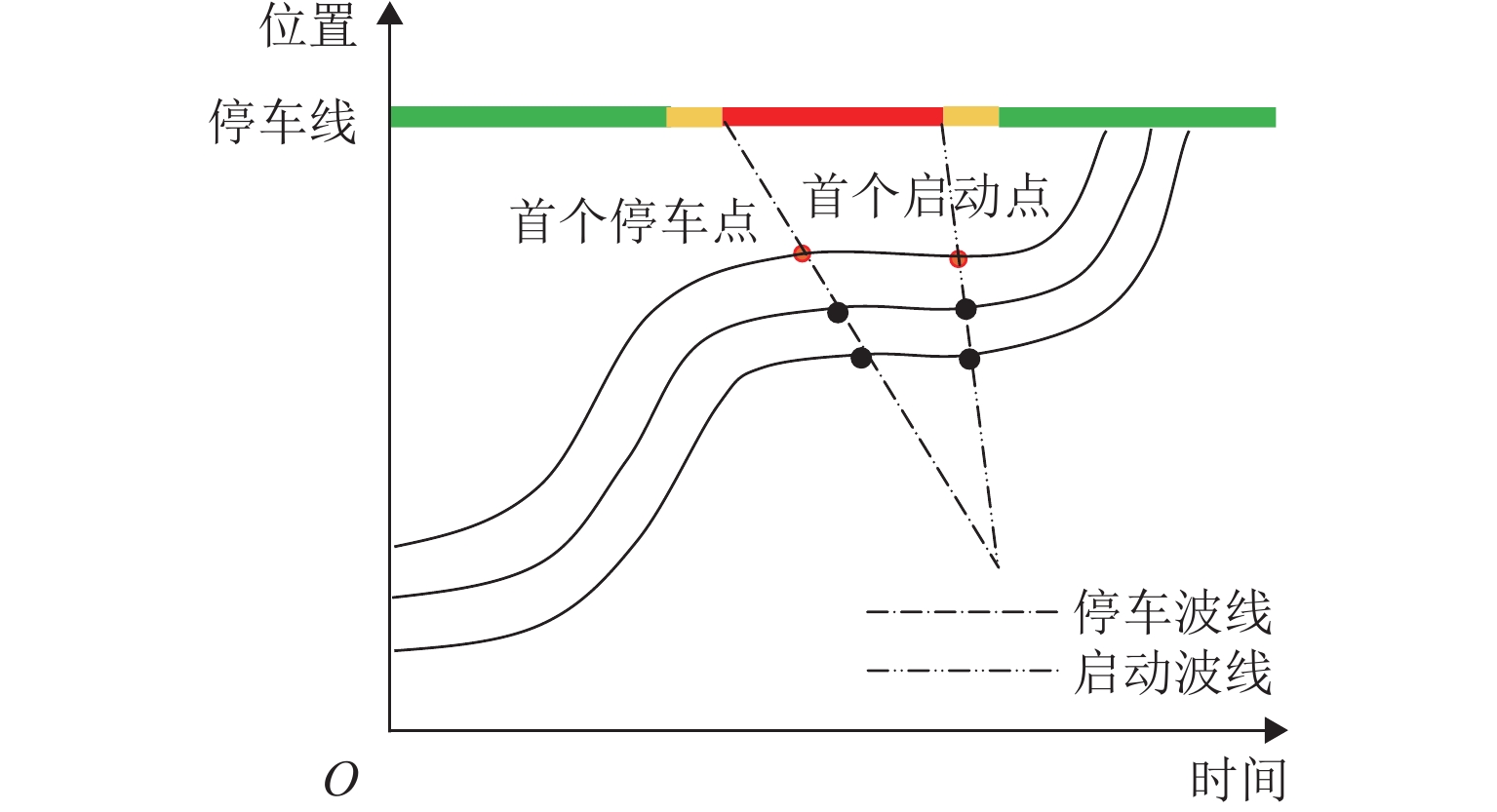

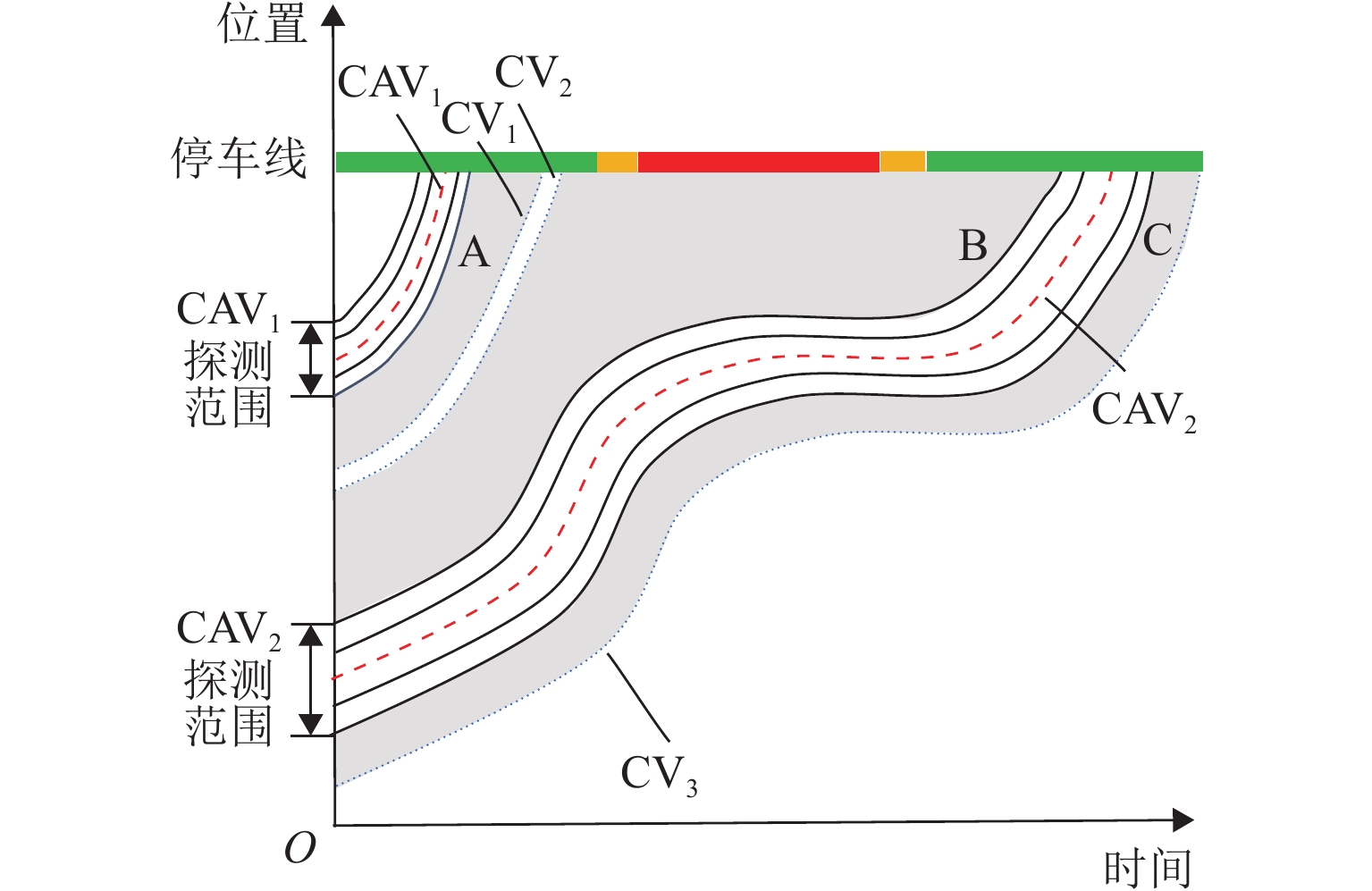
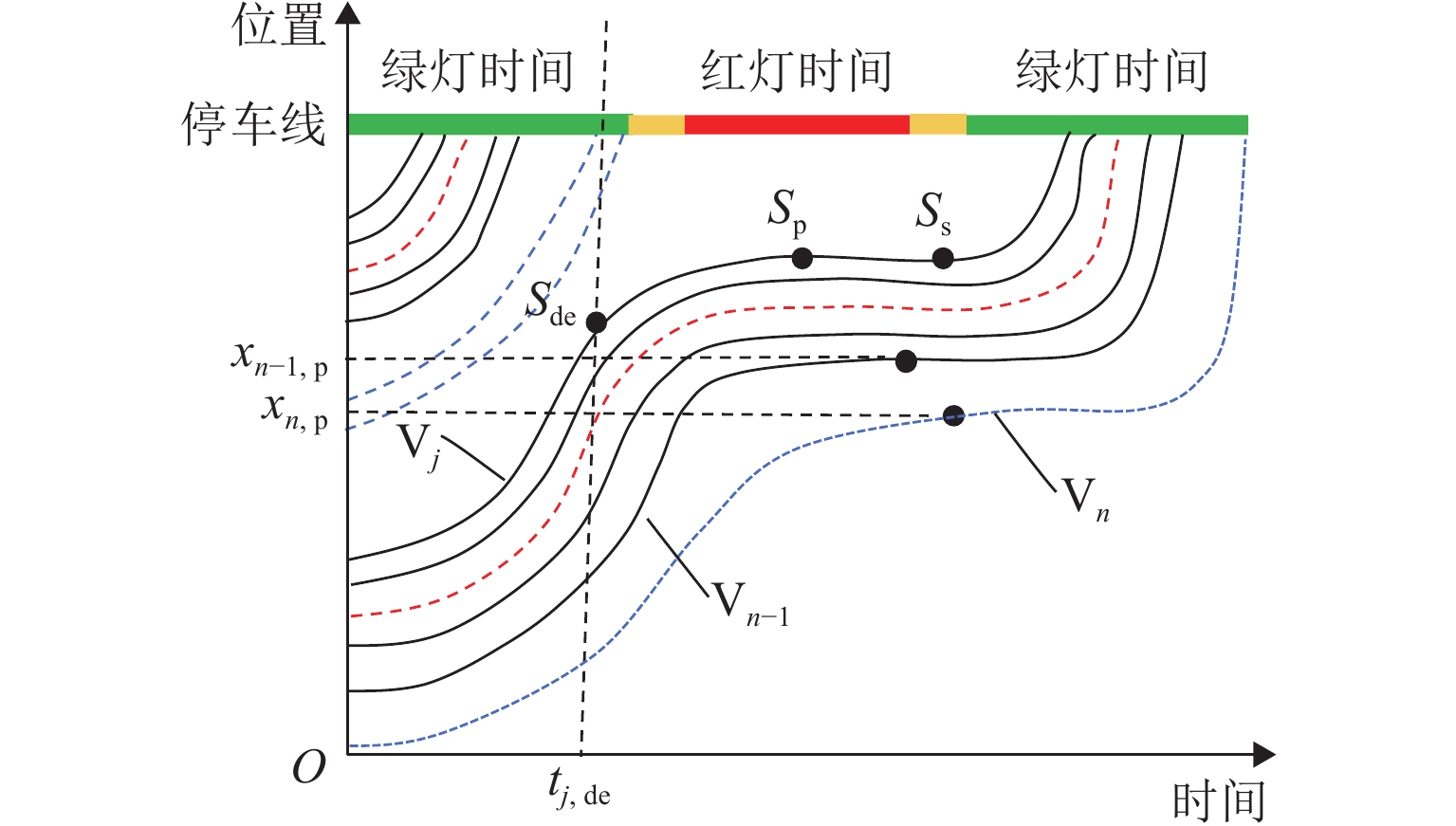

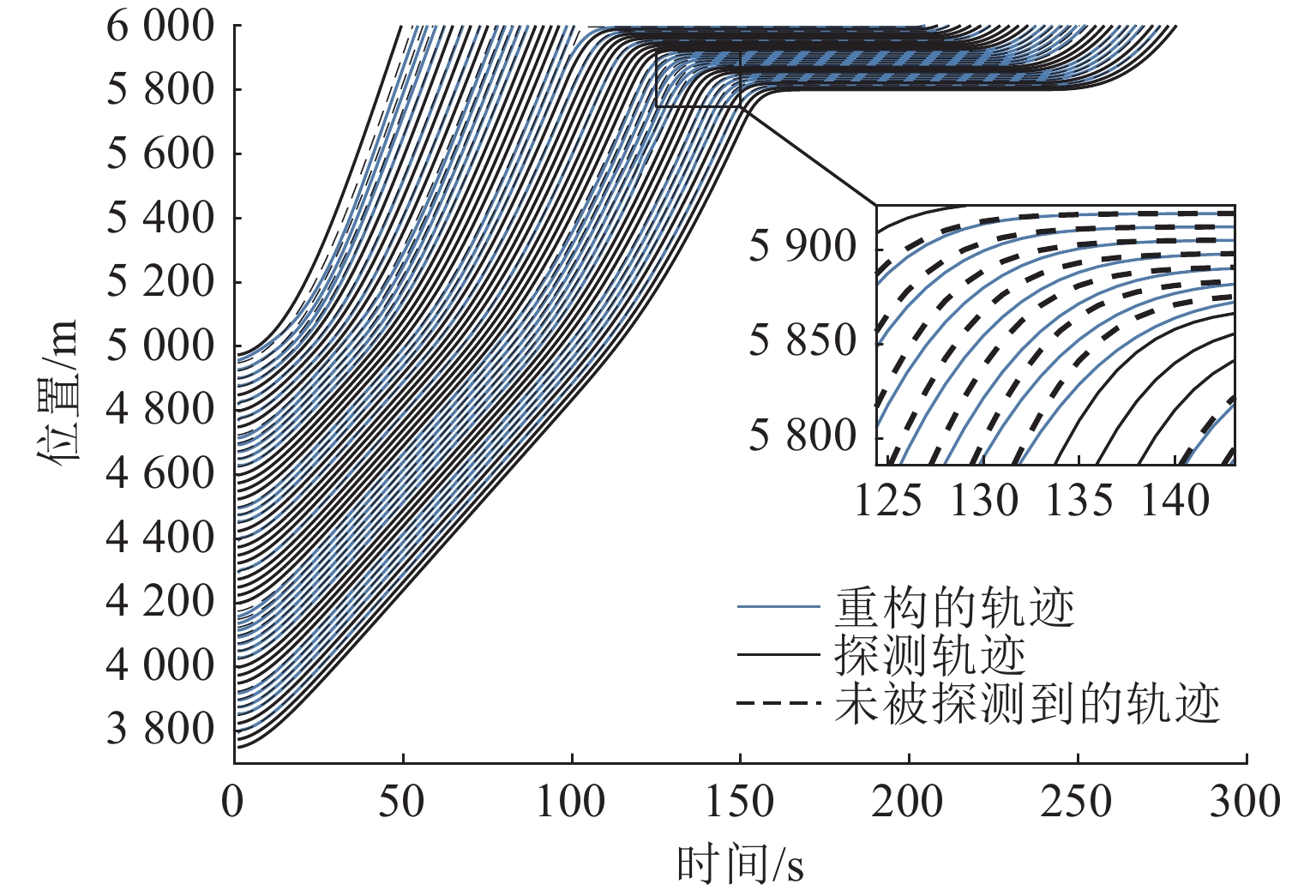
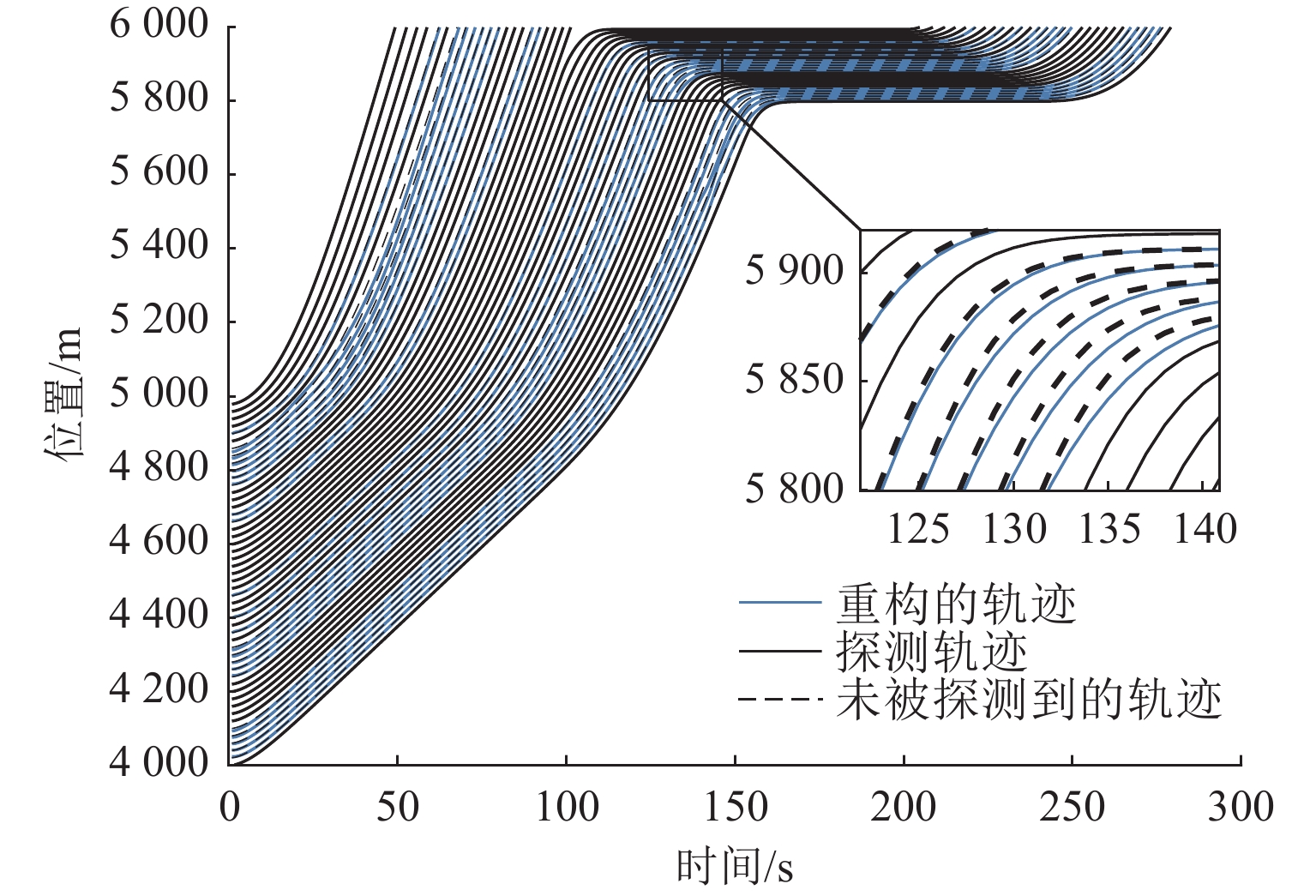
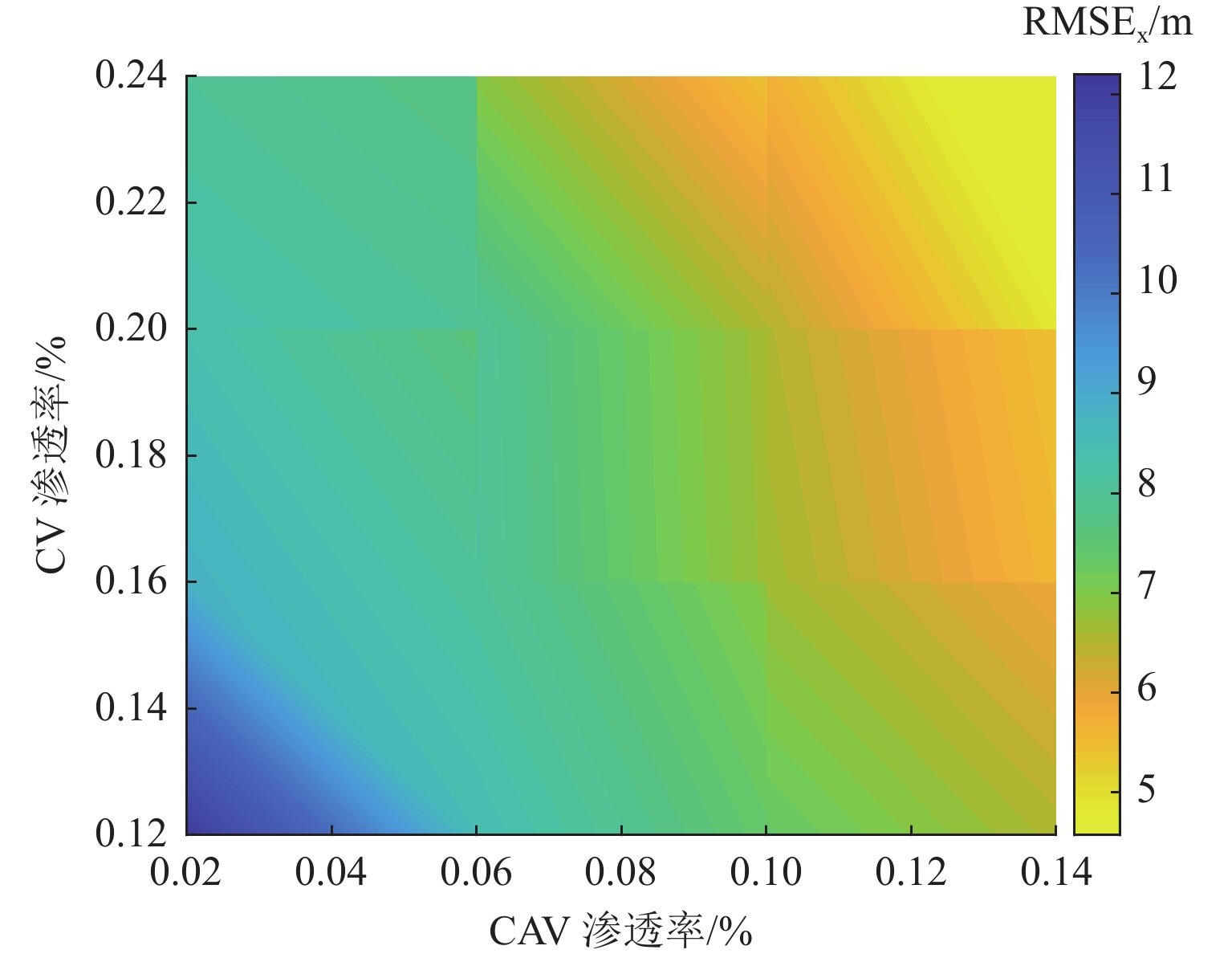
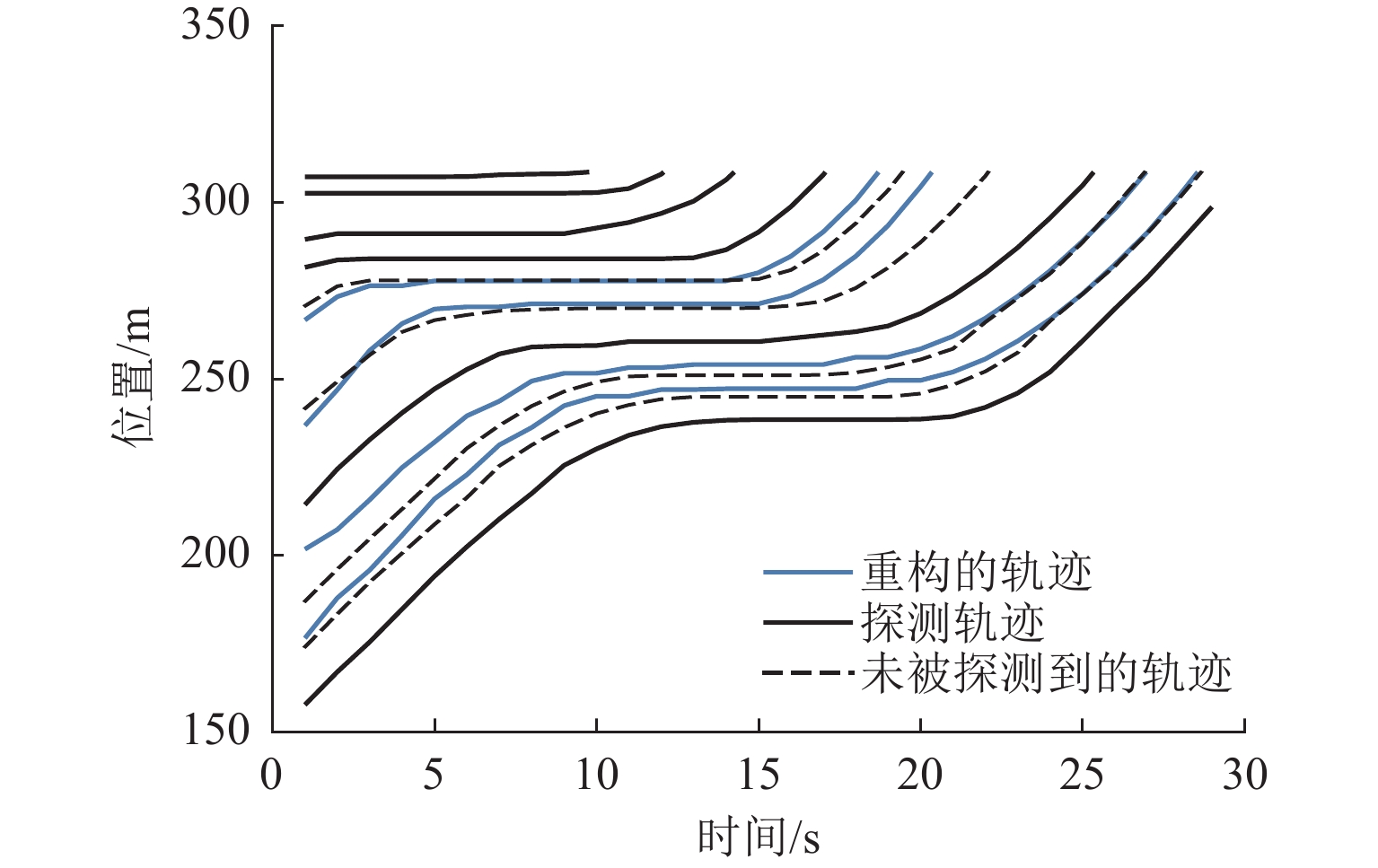
 百度学术
百度学术










